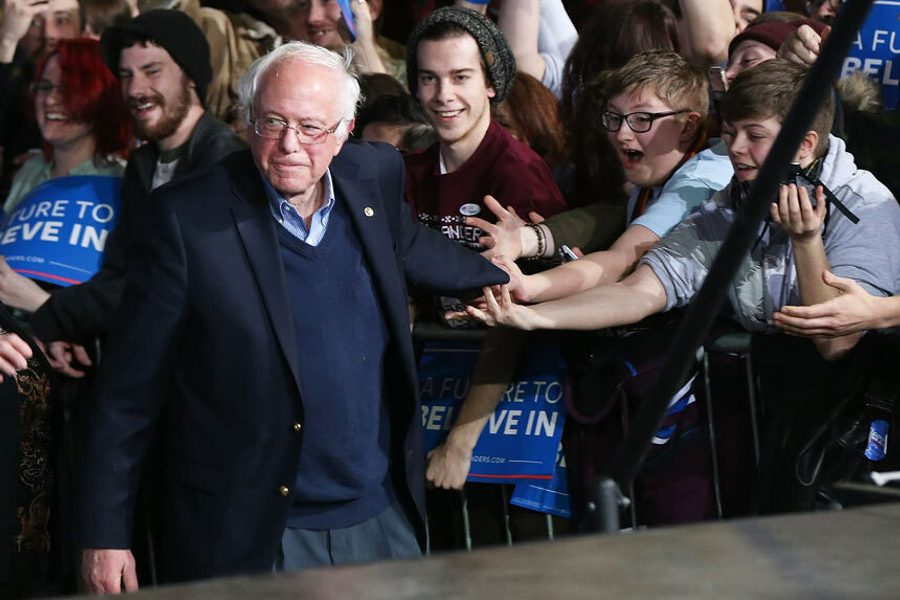Hillary Clinton Won Super Tuesday, But Bernie Sanders Won the Future
The millennials have spoken, and they overwhelmingly chose Sanders’ radical change over Clinton’s incremental reform.
Joel Bleifuss

Judging from Super Tuesday’s results, Sen. Bernie Sanders has a long row to hoe if he is going to overtake Hillary Clinton and become the Democratic nominee. By and large, the margins of her victories were larger than the margins of his. And as In These Times Deputy Publisher Christopher Hass reported last week, it is in the size of these margins that the Democratic standard bearer will be determined.
But the race for the Democratic nomination is not only a contest between Hillary Clinton and Bernie Sanders. It is also the venue for competing ideas about how social change is made, in which two visions for the future have been offered.
Look at how the debate over healthcare has played out. Sanders is an unabashed supporter of getting insurance corporations out of the healthcare business and establishing a single-payer, Medicare-for-all system. Clinton has campaigned to defend the Obamacare status quo, and tinker about the edges. Ditto with banking. Sanders promises he will break up banks that are too big to fail. Clinton wants to — well, she says she will hold Wall Street accountable and reduce risks, but we don’t exactly know what her agenda is, since she has refused to release the texts of speeches she gave to the bankers who have funded her. As for making college affordable, Sanders wants to provide free tuition for students who attend state institutions. Clinton wants to make community colleges free and reduce costs at public universities. The list goes on, but you get the picture. The choice is between radical change and incremental reform.
Again and again we hear the same measured caution from candidate Clinton, her campaign surrogates and her cheerleaders in the liberal corporate media. Better to eschew radical solutions (no matter how rational) and support Clinton’s doable, commonsense alternatives.
Dreams are for the future.
We are told: Enjoy the feast. Half a loaf is better than none.
Sanders, is having no truck with such a meager meal. He put it this way on the stump in Fort Collins, Colorado, on February 28:
I believe that if you start your campaign and run on a platform calling for a full loaf, at worst you’re gonna get a half loaf. If you start your campaign talking about a need for a half loaf, you’re going to get crumbs. And the American people today do not want, do not need crumbs. They need the whole loaf.
In the short-term, with Clinton moving closer to the nomination, it looks like we’re sitting down to a pretty lean victors banquet. Where is “change” on the menu? Next to “crumbs”?
But in the long-term, who is the real winner? Who has put ideas on the table that herald a future that transcends the status quo? As he has done before, on Super Tuesday, in state after state, Sanders won a majority of Democratic voters under the age of 30. Clinton may yet win the nomination, but the future of the party belongs to Sanders.
The kids in the Sanders’ movement are not clueless dreamers. The harsh realities of employment precarity, debt, low wages, inequality, climate change, etc., have forced young Americans to reassess their circumstances in a cold, harsh light.
If life in America is basically peachy keen, then the small-bore reforms proposed by Clinton and the neoliberal technocrats who helm the Democratic Party make a lot of sense.
If, on the other hand, the status quo is intolerable — as it is for millions of Americans — then what Sanders calls “political revolution” becomes a moral imperative.
Clinton and Sanders offered America’s millennials two futures. They made their choice.
Joel Bleifuss, a former director of the Peace Studies Program at the University of Missouri-Columbia, is the editor & publisher of In These Times, where he has worked since October 1986.









